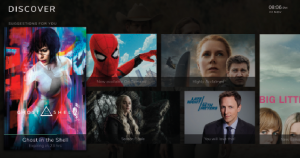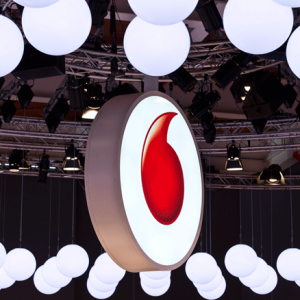
After more than 40 years of operation, DTVE is closing its doors and our website will no longer be updated daily. Thank you for all of your support.
Pay TV goes OTT
Technology choices such as cloud-based delivery of advanced service and adaptive bit-rate-enabled unicast streaming are no longer the province of pure-play OTT TV providers. They are increasingly being adopted by established pay TV providers as the latter evolve to meet the challenges laid down by Netflix and others. Stuart Thomson investigates.
 How far and how fast pay TV will converge with OTT TV is a question that is currently preoccupying both marketers and technologists within pay TV service provider organisations.
How far and how fast pay TV will converge with OTT TV is a question that is currently preoccupying both marketers and technologists within pay TV service provider organisations.
Faced with competition from Netflix and Amazon – not to mention Google and potentially Apple as well as traditional content partners such as Discovery and Disney – pay TV companies are operating in a world that increasingly sees OTT as the future.
Operators have for some time been investing in cloud-based infrastructure not only to deliver efficiencies but to provide a better service. They are increasingly using the cloud to introduce more personalisation and choice for subscribers as well as to deliver reliability, scalability and security.
TV operators are in the first instance looking to address demand among their customers for access to OTT TV services such as Netflix alongside linear broadcast and catch-up TV services. Subscribers also now expect to be able to use a growing range of services on consumer electronics devices such as mobile phones or tablets as well as on the main TV in the living room.
Larger multinational pay TV operators meanwhile also want to be able to launch services in new markets, quickly and without the need for the big infrastructure investments of times gone by.
All of these demand and supply factors – the need for faster time to market, the need for greater operating efficiencies, the need to integrate multiple content sources including those from third-party OTT players – mean that pay TV operators are increasingly turning to cloud and OTT TV technology. Telecom operators – particularly mobile players that have added fixed-line broadband offerings to their portfolio – are almost all looking to OTT technology as a cost-effective way to add TV to their line-up of multi-play of services. Existing pay TV operators with legacy broadcast infrastructure, meanwhile are looking to migrate to OTT/IP-based platforms to integrate third-party services and offer multiscreen and TV-focused services from a single platform.
Driving demand
The move to OTT technology among pay TV operators is driven both by demand – for an array of OTT TV services such as Netflix on the TV – and by supply – with a need among service providers to reduce costs and improve the time to market for new services.
Pay TV technology provider Arris recently conducted research among US TV consumers that showed that, in cases where they had access to a modern user interface, viewers accessed Netflix more often via their pay TV device than on pure streaming devices.
“The thing for pay TV operators is to take sources such as Netflix straight to the screen and integrate it into the TV,” says Charles Cheevers, chief technology officer, customer premises equipment at Arris.
Cheevers says the research showed that US consumers typically turn on the TV and look to see if there is anything to watch on their favourite linear channels. They then check what’s on their DVR list and catch-up TV and finally check out other sources available to them.
In the case of the latter, integrating OTT sources with mainstream pay TV delivered the best results and, he says, “if you integrate it in a light way it is not as effective as when you have deep metadata integration” that enables users to search across different content sources.
Cheevers says that pay TV viewers tend to focus on one or two dominant streaming services – the main ones being Netflix and YouTube, with Amazon trailing a distant third. “If you add those to [pay TV] you have a good chance of keeping the customer,” he says.
Charles Dawes, senior director of international marketing at TiVo, agrees that the changing perceptions of consumers is a key factor driving the move of pay TV towards OTT. “Consumers know what a video product is. When we started out it was something in the living room. Now it is in multiple rooms and over the last 10 years we have had video on smartphones and tablets. Then you also have video to devices that are not necessarily in the home and this is also enabled by IP,” he says. “Consumers have grown to expect all this. They can get video wherever they want. We see quite a lot of people looking at à la carte offerings and picking and choosing more.”
To keep with shifting patterns of consumption, operators need to have enough flexibility to make changes and launch new services quickly. This also plays to the strengths of OTT and cloud technology.
On the supply side, says Dawes, existing operators are looking to migrate their services to IP, in part to tap into new revenue streams such as advanced advertising and e-commerce, while new players are looking to add TV at relatively little cost to broadband and voice bundles.
Cost factors are also driving the switch. Traditional broadcast channels occupy a big chunk of spectrum that fixed-line operators could use for other applications. This has to be balanced against expectations about Quality of Service. It is challenging to maintain the quality on streaming services at peak times, such as during an international football match.
Additional cost savings can include removing the need to deploy boxes with hard drives. If network or cloud DVR services can be delivered, this can represent a huge cost saving for operators.
Multiple ecosystems
Cost savings are only one element of the move to OTT technology. Big international pay TV operators are trying to maintain legacy customer bases – often in multiple territories – while trying to add new IP services for premium subscribers and trying to extend their reach either in greenfield markets or off-net in existing markets.
For Arris’ Cheevers, off-net delivery is increasingly important as operators compete more intensively not only with each other but with OTT TV providers without their own infrastructure. “Operators need to deliver to multiple screens but the next thing is the challenge of delivering both on-net and off-net,” he says. “Service providers are looking to extend their reach beyond their current physical footprint by leveraging the cloud and WiFi. When you are on-net you can multicast but when you are off-net, the internet doesn’t do multicast.”
TiVo’s Dawes, however, makes the point that operators “don’t have to do it all at once”. He says service providers can move elements of their service delivery to the cloud, while maintain existing bases of set-top boxes. “You can migrate to hybrid boxes and supplement broadcast delivery with IP, or you can have all-IP boxes. You don’t need a traditional Linux box,” he says. Options include the deployment of Apple TV devices, as Canal+ has done in France and alternative provider Salt has done in Switzerland, or the deployment of Android TV devices, an option championed by multiple operators.
Dawes points out that while traditional pay TV operators have worked with a four-to-five year replacement cycle for set-top boxes, and have to be prepared to launch new services in the context of that cycle, using consumer devices or operator-deployed Apple or Android TV boxes liberates them from this restriction.
This could have an impact when, for example, an operator is looking to deploy voice search and control as part of its offering. However, he points out, an operator that owns the customer premise equipment also has a number of advantages.
“If operators deploy a new 4K box they will integrate voice discovery with that. If you have a new box the remote control will have voice capability and that is still powerful for the operator,” says Dawes. Being able to provide voice search with a unified back end for content discovery is a powerful tool to ensure customer loyalty, he says.
Operators also do not want their users to be pulled away towards someone else’s app environment, something that has made many wary of Google until recently. “What is the app people use when they turn on their device. Are you going to deploy something that pulls them towards the operator? This is definitely something they need to think hard about,” he says.
The desire to view content on screens other than the TV is another important demand factor pulling service directors towards a general use of OTT technology. Another is the growing use of features such as pause live TV and startover. DVR functionality is meanwhile increasingly delivered from the cloud. All of this means that operators are delivering an ever-growing proportion of content that is viewed via unicast IP streams. Consumers expect to be able to switch seamlessly between viewing content on one device and another with the same or a very similar overall look and feel to the service.
Cheevers says that Arris’ research has also shown that viewers are being driven to OTT even when they want to watch live broadcast content. Younger viewers, he says, may want to view live content and may even prefer watching it on a big TV screen, but increasingly they want to watch in private, enabling them to engage with peers on social media at the same time. To accommodate this, operators may deploy ‘hub-like’ set-tops that can help distribute video to multiple screens around the home over WiFi.
Simon Trudelle, senior director of product marketing at user experience and security technology outfit Nagra, says that the user interface needs to be specific to the functionality and screen size of the particular device being used but at the same time to have the same features across all screens. To enable this, Nagra has developed software such as its recently launched Open TV Signature Edition that is designed for operators to deliver services across multiple devices with relatively little development work.
For TiVo’s Dawes, the shift towards delivering services over IP to multiple devices rather than over a defined, managed network to a set-top has fundamentally changed the relationship between technology supplier and service provider. “It is now about more than providing middleware. We are a platform supplier and that is something that has changed. We provide the complete platform, part of which is traditional middleware for set-top boxes,” he says. “One thing we are doing is providing the same user experience across multiple devices and that is key for operators. They want consistency across devices.”
Dawes cites the latest generation of TiVo’s user experience software, TiVo Experience 4, which is designed to provide the same UX across Linux boxes, Android managed and unmanaged devices, other streaming devices and the web.
In the face of these multiple pressures, pay TV operators have an interest in simplifying their own delivery infrastructure, to the greatest extent possible.
“These groups are trying to define one or two reference platforms and are trying to extend their reach in every market,” says Trudelle. “What they do will depend on the culture of the company. There is a lot of focus on regional ARPU and operators will take pragmatic decisions based on what infrastructure they have and how much it will cost to move to a new architecture.”
Challenges
While OTT technology can provide many benefits, it is only relatively recently that operators have seen it as a viable way to provide TV services under their own brand.
“Challenges include scalability and reliability,” says Gideon Gilboa, SVP of product and marketing, media and telecom at Kaltura. “It is easy to deploy an OTT TV service if it isn’t used a lot.”
As soon as service providers are dealing with live TV and people watching something like the World Cup – even is that is delivered over broadcast infrastructure rather than streamed, but is part of a hybrid broadcast-OTT platform – operators face the challenge that every click of the remote control goes back into the cloud rather than just to the set-top.
Gilboa says that it is challenging to deploy a hybrid system that delivers on-demand content and long-tail channels over IP but relies on a broadcast technology to provide primetime live channels, particularly because operators will be using the cloud to provide metadata and personalisation features, even on the broadcast channels.
“You need to be able to implement a single content management system that controls everything from live to VOD and is not just a VOD-oriented CMS,” he says. “You have to have the ability to integrate multiple metadata sources. Every pay TV operator wants to integrate YouTube and Netflix, but you also have to include pay TV features such as blackouts and parental controls.”
Because operators want to be able to deliver new services to legacy pay TV boxes, deployments are often complex. “For a few of our customers that are pay TV operators migrating away from a legacy system, the costs are prohibitive. What we have done, along with launching a low cost OTT hybrid set-top box with the logic in the cloud, is to still enable legacy boxes with partial OTT features,” says Gilboa.
In addition to dealing with multiple network and distribution technologies in the case of large multi-territory operators such as Kaltura customer Vodafone, video providers have to provide a mix of IP and broadcast services that have different characteristics as part of a seamless hybrid user experience.
“Pay TV set-top boxes behave differently from video-on-demand-only mobile and IP services,” says Gilboa. “Even if you are delivering video over broadcast cable, every click of the remote goes back into the cloud, and the behaviour of a live TV event with hundreds of thousands of viewers pressing pause to take a bathroom break at the same time creates a real challenge of scalability.”
There is a need, he says, to create smart caching mechanisms and capabilities that allow operators to keep the show on the road, and to proactively monitor what is happening. Smart caching helps improve the robustness of the platform and prevent outages.
Despite the challenges, says Gilboa, using OTT TV technology can enable operators to deliver services up to 60% faster than launching a new operating company to deliver a bespoke pay TV system.
Nagra’s Trudelle says that growing demand for anytime, anywhere consumption means that operators are under growing pressure to optimise the use of bandwidth. The key tool to enable delivery in an un-managed environment is adaptive bit-rate encoding, but this has its own challenges.
“If everyone watches the World Cup using adaptive bit-rate video, then it puts a lot of stress on the infrastructure. Our service providers are trying to strike the right balance. Those with infrastructure in place need more bandwidth to serve on-demand and unicast demand. They are trying to push the decision point for that right to the edge of the network. If they can bring a lot of content to the home in multicast mode and then switch to unicast to serve different devices in the home, they will do that,” he says.
Trudelle says that multicast adaptive bit-rate technology is on the horizon and solutions are “getting to a point where it could be used” but some issues remain, including how quality expectations and thresholds will be managed.
He says that mainstream channels that are typically still consumed in a linear fashion are likely to continue to be delivered over broadcast infrastructure for some time to come, with less popular channels progressively being moved to unicast, on-demand streams.
With regard to ABR, Arris’s Cheevers says that Netflix has led the way. Netflix’s use of ABR has made streaming the preferred mode of consumption rather than download to watch.
ABR may be necessary even where bandwidth to the home is sufficient to support high-resolution streams immediately. Even with fibre connections to the home, consumers still need to deliver the content around that home via WiFi, with varying reliability. The challenge becomes more pressing in the case of live video, when streaming of popular content such as football matches can be up to 20 seconds behind the broadcast signal.
Cheevers points out that more and more content is now becoming OTT by default because of the popularity of functionality such as time-shifting. A broadcast signal is instantly exchanged for a unicast stream when the user presses pause or opts for catch-up. Even in the case of live sports events, which are typically viewed in real time, unicast is becoming more popular as viewers pick their own camera angles and separate themselves further from the traditional common viewing experience.
Consumer premises
One motivation in adopting OTT TV technology on the part of pay TV operators has been to reduce the need to invest in expensive consumer premises equipment. OTT enables service providers to move towards adopting a bring-your-own-device approach or to adopt an off-the-shelf platform such as Android TV in order to cut the costs of integrating multiple OTT services.
“Android TV brings some benefits to operators. There are some pre-packaged functions including the app store and the ability to validate OTT services,” says Trudelle. “Access to Google media services is also something that make sense, along with voice capability and unified search.”
Trudelle says that operators remain concerned “about giving away a lot of insight to Google” and big pay TV operators are typically not going down this route. For smaller operators looking to add TV to a basic fixed broadband play, Android TV makes sense. However, he adds, work still has to be done to integrate TV functions that are not part of Google’s core area of interest.
“Some telecom operators just want to get some content and VOD and are fine offering a hundred apps, some of which open up services to linear channels,” he says. “Larger operators want a strong play and need hybrid capabilities and linear channels. They will put more emphasis on SVOD and apps for specific demographics and the younger viewers because they are building platforms’ for all subscribers and they want an experience for everyone.”
Whatever the choices they make in terms of their CPE investment, for cable operators – and satellite TV providers – OTT is being adopted in the context of an overall switch to IP video and away from broadcast technology. For cable, simulcasting channels in QAM and IP – for time-shifted and multiscreen viewing – makes less sense as consumption pivots towards the latter. “For cable, IP video means DOCSIS 3.1, WiFi access and a good IP set-top,” says Cheevers. It takes a while to get all those in place – as well as the necessary back office. You will increasingly see the primary connection become IP for new customers. “When you pause QAM channels today, the signal switches to an IP stream through DOCSIS and a hybrid gateway or IP box, rather than QAM unicast. VOD is also now IP.”
According to Trudelle, the transition to IP and OTT video can happen smoothly if operators look first to invest in their back-end architecture. “Once that is in place, the transition can happen in a smooth way and it becomes a capex decision. How fast do you want to go to replace existing boxes,” he says. However, adds Trudelle, TV viewers are not passive participants in this process. “Some customers don’t want to give up their boxes, and that can present a marketing challenge,” he says.
Ultimately, the adoption of OTT technology by pay TV providers is not just about cost and bandwidth optimisation but about the future of media in general.
The rise of the use of data as a key tool to enable service providers to differentiate their offerings points to an emerging tension between content owners and distributors as the pay TV landscape becomes much looser and less well-defined.
Content owners can now acquire the technology or hire vendors to build a direct-to-consumer play, delivering what are effectively premium services to the likes of Android or Roku devices, providing access to the big screen in the living room.
For Trudelle, what he describes as ‘super-aggregators’ will remain relevant in this emerging landscape.
He suggests that they may evolve into something more like large department stores, where leading brands can house their own concessions – although the fate of high-street department stores in the age of e-commerce may give some pause for thought here.
“There will be a role for some aggregation to make life easier for the consumer,” says Trudelle. “If you look at the strategy of Netflix, you see them being integrated into the search experience with deep linking back into their app. The big difference with the past is that channels had to be part of a bundle. In a more fragmented world that has to change, but they still need to be visible.”
For Kaltura’s Gilboa, OTT is above all about greater personalisation, and he argues that consumers could ultimately benefit from personalised packages as well as a personalised user experience and advertising.
“OTT is meeting mainstream TV distribution,” says Gilboa. “A lot of viewing today is ‘traditional TV’ viewing and that will change, which is one thing. But the second thing we are seeing is that those operators that have already started down this path are thinking about what comes next. If you build the foundation of a cloud system that delivers scalability and security and the robustness of pay TV, the next thing is to differentiate your services by leveraging the data you have about subscribers to create ‘total TV’ – that doesn’t just mean recommendations but personalisation across the board.”
In focus: Vodafone’s example: converging technology in multiple markets
 Vodafone is a multinational operator with legacy cable systems in a number of markets and no TV presence at all in others. The company tapped OTT TV technology specialist Kaltura to deliver an experience that combines IP-delivered services with local broadcast channels.
Vodafone is a multinational operator with legacy cable systems in a number of markets and no TV presence at all in others. The company tapped OTT TV technology specialist Kaltura to deliver an experience that combines IP-delivered services with local broadcast channels.
“We are seeing a big transition of OTT technology into the mainstream TV distribution business,” says Gideon Gilboa, SVP of product and marketing, media and telecom at Kaltura. According to Gilboa, Vodafone wanted “a solution with OTT at its core that embraces local TV distribution too”.
Gilboa says that Vodafone wanted OTT features delivered alongside local pay TV channels from a single back end infrastructure to the set-top box. The big challenge, he says, is to “make OTT carrier grade” and to integrate the OTT system with multiple broadcast infrastructures in multiple territories.
“Vodafone had hardware-centric, own-premises pay TV headends for every market except where they didn’t have any, along with expensive consumer premises equipment,” he says. “They moved to an elastic multi-country, multi-tenant software-based system for all countries.”
The result, he says, was a 50% reduction in total cost of ownership and the ability to launch new services 60% faster than was previously the case.
For Vodafone, it was important for Kaltura to be able to support different services that use different combinations of broadcast and OTT technology , using the same cloud system from a public cloud infrastructure.
As far as possible, says Gilboa, integration of different elements and customisation of the platform is pushed out to the edge of the network. The company adopted a single set-top strategy with multiple front ends for DVB-T and DVB-C hybrid deployments as well as IP-only boxes where necessary.
“We are trying to keep the core of the platform the same across the market as a common layer,” says Gilboa.
Building an OTT TV infrastructure, he says, had created more opportunities for user engagement and making money from subscribers. In legacy markets, viewership had increased and the net promoter score for the service had risen. The introduction of advanced cloud-enabled features such as personalisation and cloud DVR along with the ability to switch easily between screens enables pay TV providers to offer a similar experience to Netflix or HBO Now.
For telecom operators looking to add TV to a broadband and phone service, OTT TV provides a cost-effective way to do this with the benefit that operators can tap into the likes of Google’s wealth of content in the case of Android TV or third-party OTT services rather than go to the trouble of striking content deals and aggregating services themselves.





